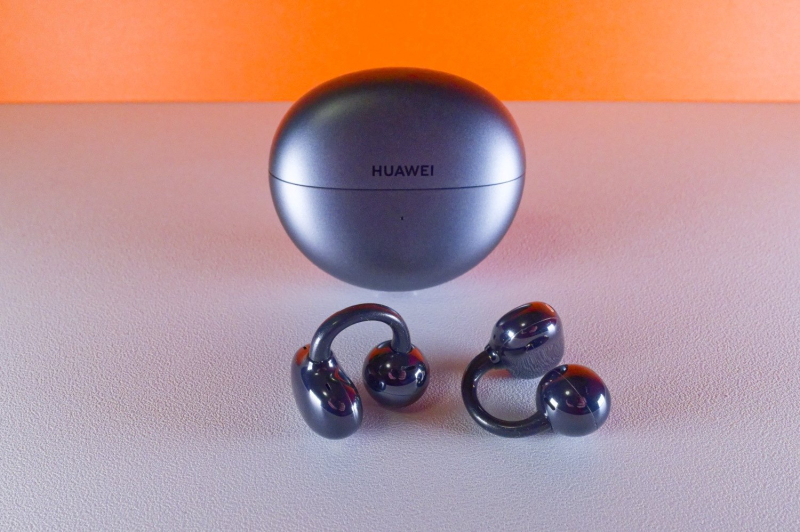
© Marc Mitrani for Presse-citron
Frankly, we thought we had seen it all – or rather heard it all – when it came to wireless headphones. We were wrong: at a time when manufacturers swear by active noise cancellation, Freeclips are going against the trend. Here, no sound insulation, quite the contrary.
According to Huawei, these headphones like no other let the user hear everything that is happening around them, without sacrificing audio quality. You know us: we wanted to check this out for ourselves. So we lived with the Freeclips for a little month… and we weren’t disappointed!
Freeclips have been available since January 10 at the price of €199.99, notably on the Huawei website and at Amazon. They come in two colors – black and purple – and benefit from an introductory offer valid until February 1, 2024 only on the manufacturer's website (the Huawei Band 8 connected bracelet is free with purchase).
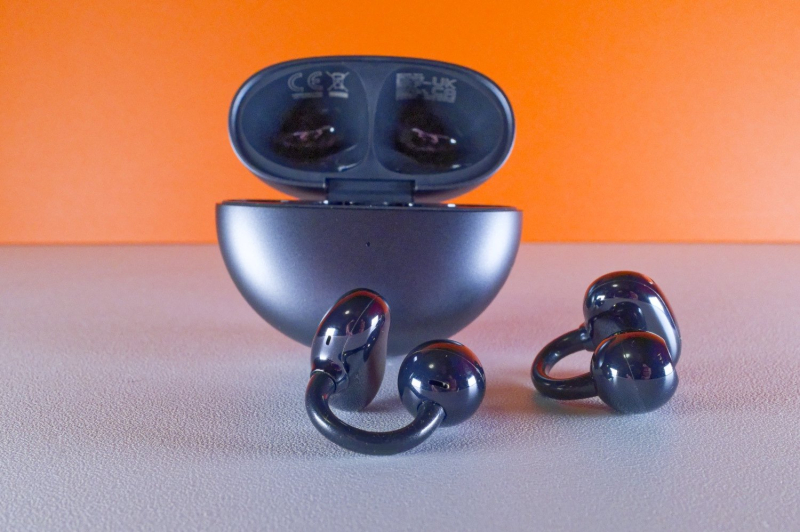
© Marc Mitrani for Presse-citron

© Marc Mitrani for Presse-citron
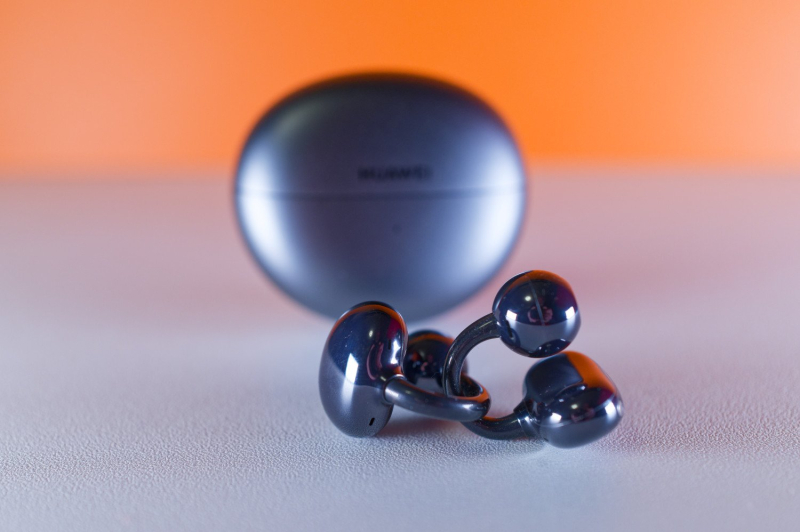
© Marc Mitrani for Presse-citron
Each Freeclip earphone consists of a sphere and a sort of “bean”, the two of which are connected by a bridge. The first has a diameter of 13.3mm and contains the speaker itself. The second is longer and flattened, thus explaining the term we have given it. It contains the battery as well as all the electronics necessary for proper operation.
Both are connected by a “C” bridge the design of which was the subject of all attention. It was built around a Ni-Ti (Nickel-Titanium) frame and has a sort of shape memory which allows it to best adapt to the user's ear.
10,000 peeled ears
And suffice to say that this is no laughing matter. Huawei studied 10,000 human ears to best define the specifications. These clever calculations determined that an inclination of 11.4° of the bridge and a clamping force of 0.15 Newtons were optimal for holding the device in place. The adjustment is made thanks to the properties of Ni-Ti, a bit like memory foam.
For comparison, let us point out that the few competing earphone models (and not marketed in Europe, by the way) literally strain the ear with a clamping force six to eight times higher. We tested a few: our ears didn't say thank you!
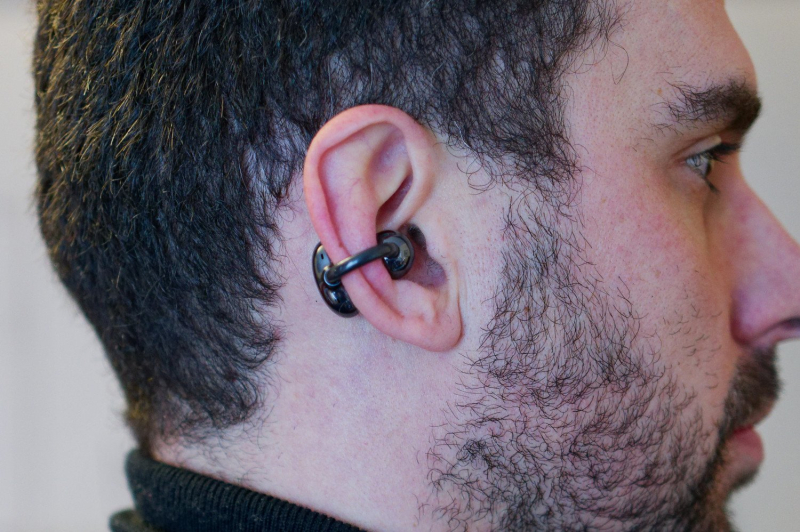
© Marc Mitrani for Presse-citron
Very good, but how does it work, in concrete terms ? The audio sphere is naturally placed above the ear canal, between the concha and the tragus of the external ear. The bean takes place on the back side of the conch, the bridge connecting them makes the whole thing look like a kind of earring or piercing. Once seated, the bridge adapts to the listener's shape to minimize pressure.
At no time does the earpiece fit into the ear canal. The clamping force is strong enough to hold the acoustic sphere in place, but discreet enough to be forgotten in a few minutes. Believe it or not, it really doesn’t feel like you’re wearing headphones! Better yet: you can play a sport, dance or run without risking losing or damaging them, the IP54 certification ensuring that they will not be afraid of perspiration.
Left, right: same fight
By their original design, the two Freeclips are strictly identical, thus avoiding the manufacturer having to create a specific earphone for each ear. A sensor automatically detects the left or right placement of each of them and assigns them their role so as to respect the stereophonic orientation.
This feature only has advantages since the manufacturing of Freeclips is simplified (only one model to design). The user no longer has to strain their eyes to look for the “ L ” and “ R ” indicating the correct placement.
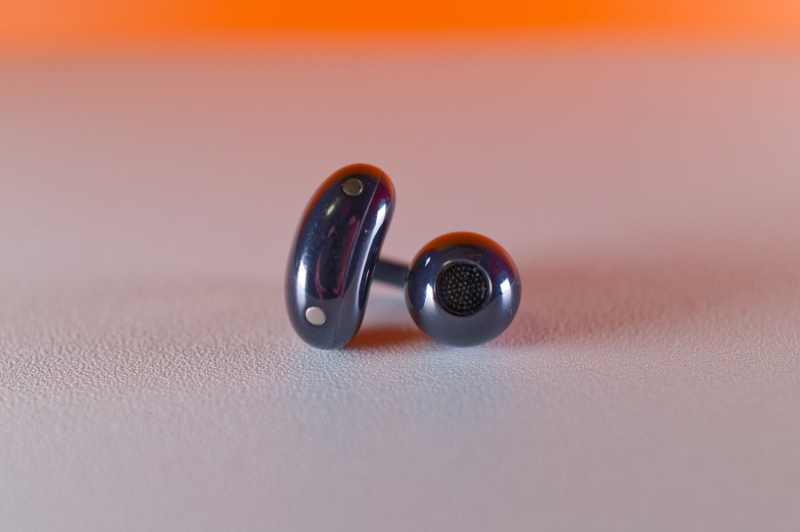
© Marc Mitrani for Presse-citron
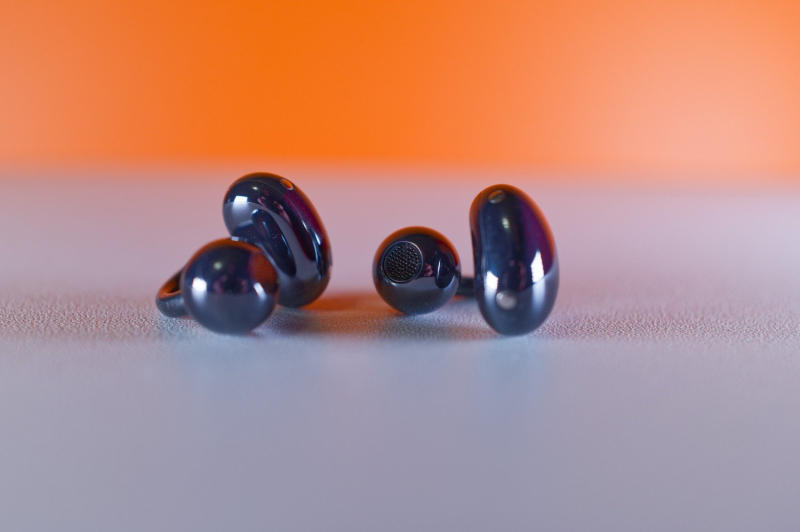
© Marc Mitrani for Presse-citron
Touch controls are of course included. No need to rack your brains to find the touch zone: just tap the sphere, bean or sound to control audio playback! The companion application allows you to adjust them to your habits.
Single touch is not taken into account, only double or triple touches are recognized. It is also impossible to adjust the volume by sliding on the surface. Is this a design choice or an incompatibility with the shape of the headphones? Difficult to say, even if we lean towards the second hypothesis.
In passing, we strongly recommend performing the firmware update which will be offered the first time you use the companion app. It fixes some bugs and greatly improves the reliability of the Bluetooth connection. Once applied, the accidental loss of connection between the smartphone and the headphones has completely disappeared.
As you can see, we were amazed by the design of Freeclips. But are they also convincing from a musical point of view? In a nutshell: yes. The sound produced is homogeneous and very pleasant. Of course, fans of big bass who are trying will not be convinced, the absence of passive isolation not being able to satisfy them. Same thing if you are allergic to extraneous noise, by definition obligatory here.
Low frequencies are expressed with ease. The mids and highs are also present without being piercing. The spatialization of the audio scene turns out to be very relevant and pleasant. At no time do we lose contact with the environment, which is extremely practical in many situations. For example, we can wear them in the city, run or even cycle without taking unnecessary risks.
It also becomes possible to listen to a podcast quietly while keeping an ear on the activity of your children (or your open space neighbor). To be honest, you almost have the impression of listening to audio through stereo speakers: the music is present, but you can hear everything that is happening around you.
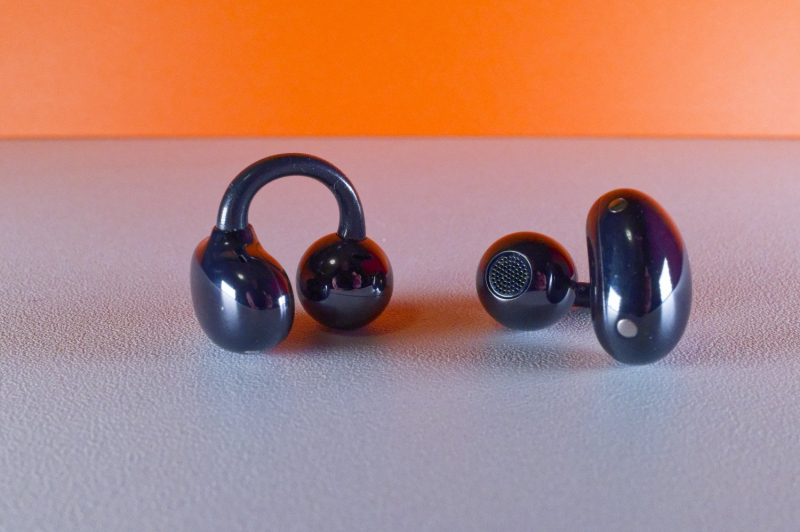
© Marc Mitrani for Presse-citron
On a phone call, Huawei engineers did a remarkable job of minimizing sound leaks. They would thus be reduced by 6 to 17 dB compared to bone conduction headphones. The immediate interest is of course the preservation of the confidentiality of a conversation.
Even if our tests do not allow us to verify the figures put forward, we still noted that the voice of our correspondent was not perceptible by our immediate neighbors in multiple scenarios (notably in an elevator, seated side by side in quiet environment and on public transport or even while walking in the street). Our interlocutors heard our voice clearly, even in a moderately quiet environment (busy street).
Finally, a word on autonomy. Huawei announces that a full charge allows up to eight hours of music listening while the case's battery provides up to 36 hours without using an electric charger (USB-C or induction). The promise is perfectly kept since the average autonomy on a charge varies between 7:30 and 8:10 depending on the use made and the sound volume chosen.
Without a doubt, Huawei Freeclips are an excellent surprise. Much more efficient than bone conduction headsets, they are pleasant to wear in all circumstances. Open design requires, the sound reproduction is not as good as with in-ear headphones. It still remains very pleasant, at least as much as the white cotton swab headphones from who-you-know… Good point also for the excellent autonomy and for the price, which we consider correct in view of the performances.
📍 To not miss any news from Presse-citron, follow us on Google News and WhatsApp.

